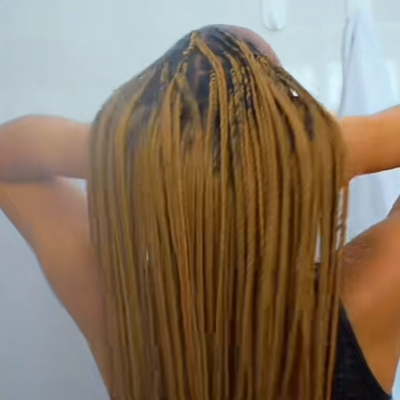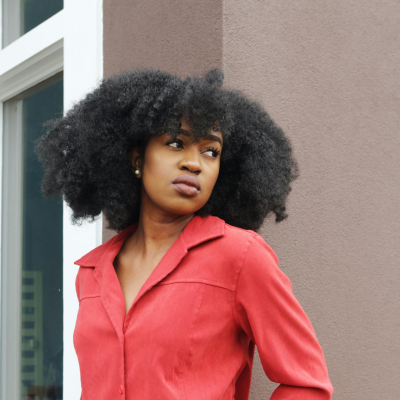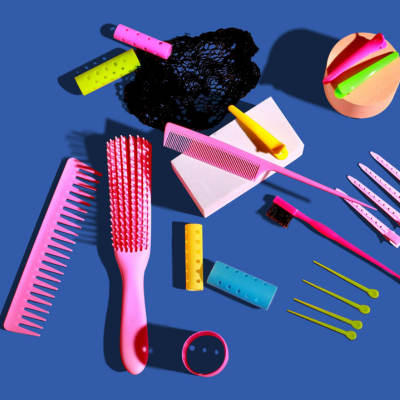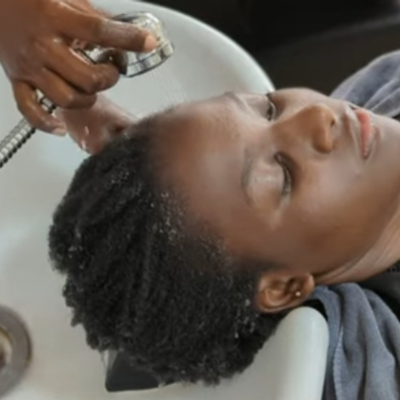- Support 24/7
- +1 (480) 468-4543
- livara@mylivara.com
Decoding Dry And Hard Natural Hair: What You Need To Know

Braid Care: How Often to Wash for Healthy, Beautiful Hair
April 18, 2024
Essential Tips for Promoting Maximum Growth in 4C Hair
April 20, 2024
Natural hair, in all its glorious textures and coils, is a crowning achievement. It’s a canvas for endless styles, a symbol of cultural pride, and a testament to our unique beauty. But for many naturals, the journey with their hair can feel like a constant battle against dryness and hardness. This struggle is real, and it can leave you feeling frustrated and yearning for the soft, manageable hair of your dreams.
The good news? Understanding the root causes of dryness and hardness in natural hair is the first step towards achieving healthy, thriving locks. This article dives deep into the culprits behind dryness and equips you with the knowledge and strategies to combat them. We’ll explore the science behind moisture retention in natural hair, the environmental and lifestyle factors that contribute to dryness, and most importantly, practical solutions to transform your hair from dry and hard to soft and supple.
Moisture Mishap: The Root of Dryness
At the heart of dry, hard natural hair lies a fundamental imbalance – a lack of moisture. Unlike straighter hair types, natural hair’s kinks and coils create a unique challenge: water retention. The natural curl pattern disrupts the hair cuticle’s ability to hold onto moisture, making it more prone to dehydration. This is where a consistent and effective moisturizing routine becomes crucial.
Why Moisture Matters:
- Hydration is Key: Water is the lifeblood of healthy hair. It plumps up the hair shaft, making it more flexible and less prone to breakage. Dry hair, on the other hand, becomes brittle and snaps easily.
- Manageability Magic: Moisture makes natural hair easier to detangle, style, and manage. Dry, hard hair becomes tangled and difficult to work with, leading to frustration and potential damage.
Environmental Factors
Environmental factors such as exposure to harsh weather conditions, sun exposure, wind, and pollution can strip the hair of its natural oils and moisture, leaving it dry and brittle. Additionally, indoor heating during the winter months and air conditioning during the summer can further exacerbate dryness by drying out the air and dehydrating the hair.
Overuse of Harsh Products
The use of harsh hair care products containing sulfates, alcohol, and other drying ingredients can strip the hair of its natural oils and moisture, leading to dryness and hardness. Shampoos containing sulfates can be particularly drying, as they strip away excess oil and can disrupt the hair’s natural moisture balance. Similarly, styling products containing alcohol can cause the hair to become stiff and brittle over time.
Heat Styling and Chemical Treatments
Frequent heat styling with blow dryers, straighteners, and curling irons, as well as chemical treatments like hair dyeing, can damage the hair cuticle and cause it to become dry and brittle. Heat styling tools can deplete the hair’s moisture levels and weaken its protein structure, while chemical treatments can alter the hair’s natural composition and strip it of its protective layer, making it more prone to dryness and breakage.
Lack of Proper Hair Care
A lack of proper hair care practices, such as infrequent washing, inadequate conditioning, rough handling, and not sleeping with a satin bonnet or silk scarf, can contribute to dryness and hardness in natural hair. Skipping regular deep conditioning treatments, failing to moisturize and seal the hair properly, and using rough or abrasive styling techniques can all contribute to moisture loss and damage, resulting in dry, brittle hair.
Solutions for Soft, Supple Hair:
The good news is that with a few adjustments to your routine, you can combat dryness and achieve healthy, happy hair. Here are some key strategies:
- Moisture is Mandatory: Develop a consistent moisturizing routine that includes a leave-in conditioner, deep conditioning treatments, and sealing in moisture with oils or butters.
- Embrace Gentle Cleansing: Opt for sulfate-free shampoos that cleanse your scalp without stripping away natural oils.
- Heat with Caution: Minimize heat styling and use heat protectant sprays when necessary.
- Space Out Chemical Treatments: Give your hair ample time to recover between chemical treatments.
- TLC (Tender Loving Care) Makes a Difference: Get regular trims to remove split ends, deep condition regularly, and handle your hair gently to prevent breakage.
Techniques to Tame Dryness: Your Natural Hair Hydration Arsenal
Now that we’ve identified the enemies of moisture retention, let’s explore some powerful techniques to combat dryness and transform your natural hair:
The Moisture Retention Powerhouse: The LOC Method
The LOC method, which stands for Liquid, Oil, and Cream, is a popular technique for locking in moisture in natural hair. Here’s how it works:
- Liquid: Start with a leave-in conditioner or water-based product to provide initial hydration. Apply it generously to damp hair, focusing on the mid-lengths and ends.
- Oil: Next, seal in the moisture with a natural oil like castor, jojoba, argan, or any other nourishing natural oil of your choice. For an assortment of oils you can benefit from, try out our rich Tanzanite Hair Oil. A small amount goes a long way – apply just a few drops to your fingertips and smooth it over your hair, avoiding the roots to prevent greasiness.
- Cream: Finally, lock everything in place with a styling cream or hair butter like the shea butter-infused Emerald Hair Food. This adds definition, hold, and additional moisture.
Deep Conditioning: A Weekly Must
Deep conditioning treatments are essential for providing deep hydration to dry, hard hair. Aim for deep conditioning treatments at least once a week, or more often if your hair feels particularly dry. Look for masks rich in emollients and humectants, ingredients that attract and retain moisture. Apply the deep conditioner generously to damp hair, cover with a plastic cap for added heat penetration, and leave it on for 20-30 minutes before rinsing thoroughly.
Nighttime Nourishment: The Power of Satin and Silk
Cotton pillowcases can be surprisingly rough on your hair, absorbing moisture and contributing to frizz. Upgrade to a satin or silk pillowcase! These smoother fabrics allow your hair to glide effortlessly, reducing friction and preventing moisture loss throughout the night.
Protective Styles: Give Your Hair a Break
Protective styles like braids, twists, and cornrows can be a great way to give your hair a break from harsh styling and environmental factors. They also help to retain moisture and promote healthy hair growth. Just remember not to install them too tight as that can result in hair loss, especially along the hairline.
Embrace the Power of Water: Spritz and Go!
A simple spritz of water throughout the day can help revive dry hair and prevent further dehydration. Keep a spray bottle filled with clean water handy and mist your hair lightly whenever it feels dry or needs a refresh. Remember to follow up with some hair oil to seal in the moisture.
For a 2in1 experience, invest in a moisturizing braid spray like the Tsavorite Spritz Moisturizer Hair Spray to refresh your hair each time. It contains hydrating guava leaf extract, nourishing rosemary and nettle, as well as moisturizing glycerin.
Remember, Consistency is Key!
The key to combating dryness and achieving healthy natural hair lies in consistency. Develop a regular routine that incorporates moisturizing techniques, gentle cleansing, and minimal heat styling. Over time, you’ll see and feel the difference – soft, supple, and beautifully hydrated natural hair that thrives! Remember, you are a gem.



